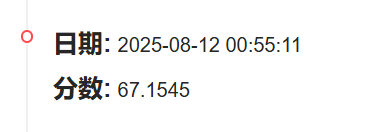1
2
3
4
5
6
7
8
9
10
11
12
13
14
15
16
17
18
19
20
21
22
23
24
25
26
27
28
29
30
31
32
33
34
35
36
37
38
39
40
41
42
43
44
45
46
47
48
49
50
51
52
53
54
55
56
57
58
59
60
61
62
63
64
65
66
67
68
69
70
71
72
73
74
75
76
77
78
79
80
81
82
83
84
85
86
87
88
89
90
91
92
93
94
95
96
97
98
99
100
101
102
103
104
105
106
107
108
109
110
111
112
113
114
115
116
117
118
119
120
121
122
123
124
125
126
127
128
129
130
131
132
133
134
135
136
137
138
139
140
141
142
143
144
145
146
147
148
149
150
151
152
153
154
155
156
157
158
159
160
161
162
163
164
165
166
167
168
169
170
171
172
173
174
175
176
177
178
179
180
181
182
183
184
185
186
187
188
189
190
191
192
193
194
195
196
197
198
199
200
201
202
203
204
205
206
207
208
209
210
211
212
213
214
215
216
217
218
219
220
221
222
223
224
225
226
227
228
229
230
231
232
233
234
235
| import os
import sys
import subprocess
import pandas as pd
import shutil
import numpy as np
import torch
import torchaudio
from tqdm import tqdm
import librosa
import soundfile as sf
from pydub import AudioSegment
import tempfile
import time
import warnings
warnings.filterwarnings("ignore")
print(f"PyTorch版本: {torch.__version__}")
os.makedirs("result/", exist_ok=True)
print("正在读取任务数据...")
task = pd.read_csv("aigc_speech_generation_tasks/aigc_speech_generation_tasks.csv")
def preprocess_audio(audio_path, target_sr=16000):
"""预处理音频以确保格式一致"""
try:
audio, sr = librosa.load(audio_path, sr=None)
if sr != target_sr:
audio = librosa.resample(audio, orig_sr=sr, target_sr=target_sr)
if len(audio.shape) > 1:
audio = librosa.to_mono(audio)
audio = audio / np.max(np.abs(audio)) * 0.9
return audio, target_sr
except Exception as e:
print(f"处理音频{audio_path}时出错: {e}")
return None, None
def enhance_audio_quality(audio, sr):
"""应用基础音频增强技术"""
try:
audio_filtered = librosa.effects.preemphasis(audio, coef=0.95)
audio_normalized = librosa.util.normalize(audio_filtered)
return audio_normalized
except Exception as e:
print(f"音频增强出错: {e}")
return audio
print("正在加载TTS模型...")
vits_available = False
try:
from TTS.api import TTS
tts = TTS("tts_models/multilingual/multi-dataset/xtts_v2", gpu=torch.cuda.is_available())
vits_available = True
print("XTTS模型加载成功")
except Exception as e:
print(f"XTTS模型不可用: {e}")
print("正在尝试安装TTS...")
try:
subprocess.check_call([sys.executable, "-m", "pip", "install", "TTS"])
from TTS.api import TTS
tts = TTS("tts_models/multilingual/multi-dataset/xtts_v2", gpu=torch.cuda.is_available())
vits_available = True
print("安装后XTTS模型加载成功")
except Exception as e:
print(f"安装和加载XTTS失败: {e}")
edge_tts_available = False
try:
import edge_tts
edge_tts_available = True
print("Edge TTS可用")
except ImportError:
print("Edge TTS不可用,正在尝试安装...")
try:
subprocess.check_call([sys.executable, "-m", "pip", "install", "edge-tts"])
import edge_tts
edge_tts_available = True
print("Edge TTS安装成功")
except Exception as e:
print(f"安装Edge TTS失败: {e}")
pyttsx3_available = False
try:
import pyttsx3
pyttsx3_available = True
print("pyttsx3可用")
except ImportError:
print("pyttsx3不可用,正在尝试安装...")
try:
subprocess.check_call([sys.executable, "-m", "pip", "install", "pyttsx3"])
import pyttsx3
pyttsx3_available = True
print("pyttsx3安装成功")
except Exception as e:
print(f"安装pyttsx3失败: {e}")
print(f"正在处理{len(task)}个任务...")
for idx, row in tqdm(task.iterrows(), total=len(task)):
utt_id = row['utt']
ref_audio_path = os.path.join("aigc_speech_generation_tasks", row['reference_speech'])
text = row['text']
output_path = os.path.join("result", f"{utt_id}.wav")
ref_audio, sr = preprocess_audio(ref_audio_path)
if ref_audio is None:
print(f"警告:无法处理任务{utt_id}的参考音频,使用备用方案")
if pyttsx3_available:
try:
engine = pyttsx3.init()
engine.save_to_file(text, output_path)
engine.runAndWait()
continue
except:
pass
if os.path.exists("tests/infer_cli_basic.wav"):
shutil.copy("tests/infer_cli_basic.wav", output_path)
continue
success = False
if vits_available:
try:
with tempfile.NamedTemporaryFile(suffix=".wav", delete=False) as temp_ref:
temp_ref_path = temp_ref.name
sf.write(temp_ref_path, ref_audio, sr)
tts.tts_to_file(
text=text,
file_path=output_path,
speaker_wav=temp_ref_path,
language="zh" if any('\u4e00' <= c <= '\u9fff' for c in text) else "en"
)
os.unlink(temp_ref_path)
if os.path.exists(output_path):
gen_audio, gen_sr = preprocess_audio(output_path)
if gen_audio is not None:
enhanced_audio = enhance_audio_quality(gen_audio, gen_sr)
sf.write(output_path, enhanced_audio, gen_sr)
success = True
except Exception as e:
print(f"任务{utt_id}的XTTS生成失败: {e}")
if not success and edge_tts_available:
try:
temp_output = f"temp_edge_{utt_id}.mp3"
import asyncio
async def edge_tts_generate():
voice = "zh-CN-XiaoxiaoNeural"
if not any('\u4e00' <= c <= '\u9fff' for c in text):
voice = "en-US-AriaNeural"
communicate = edge_tts.Communicate(text, voice)
await communicate.save(temp_output)
asyncio.run(edge_tts_generate())
if os.path.exists(temp_output):
audio = AudioSegment.from_mp3(temp_output)
audio.export(output_path, format="wav")
os.remove(temp_output)
gen_audio, gen_sr = preprocess_audio(output_path)
if gen_audio is not None:
enhanced_audio = enhance_audio_quality(gen_audio, gen_sr)
sf.write(output_path, enhanced_audio, gen_sr)
success = True
except Exception as e:
print(f"任务{utt_id}的Edge TTS生成失败: {e}")
if not success and pyttsx3_available:
try:
engine = pyttsx3.init()
engine.save_to_file(text, output_path)
engine.runAndWait()
success = os.path.exists(output_path)
except Exception as e:
print(f"任务{utt_id}的pyttsx3生成失败: {e}")
if not success:
print(f"任务{utt_id}所有TTS模型均失败,使用备用方案")
if os.path.exists("tests/infer_cli_basic.wav"):
shutil.copy("tests/infer_cli_basic.wav", output_path)
else:
silence = np.zeros(sr * 2)
sf.write(output_path, silence, sr)
time.sleep(0.1)
task['synthesized_speech'] = [f"{i}.wav" for i in task['utt']]
task.to_csv("result/result.csv", index=None, encoding="utf-8")
print("正在创建提交的压缩包...")
subprocess.run("zip -r result.zip result/", shell=True)
print("完成!提交文件已生成:result.zip")
|



![[书生大模型]论文分类微调打榜赛二等奖-比赛方案分享](https://picbed.octalzhihao.top/img/myblog/cover/default_cover_6.webp)
![[Datawhale AI夏令营] 语音克隆比赛方案](https://picbed.octalzhihao.top/img/myblog/cover/default_cover_15.webp)


